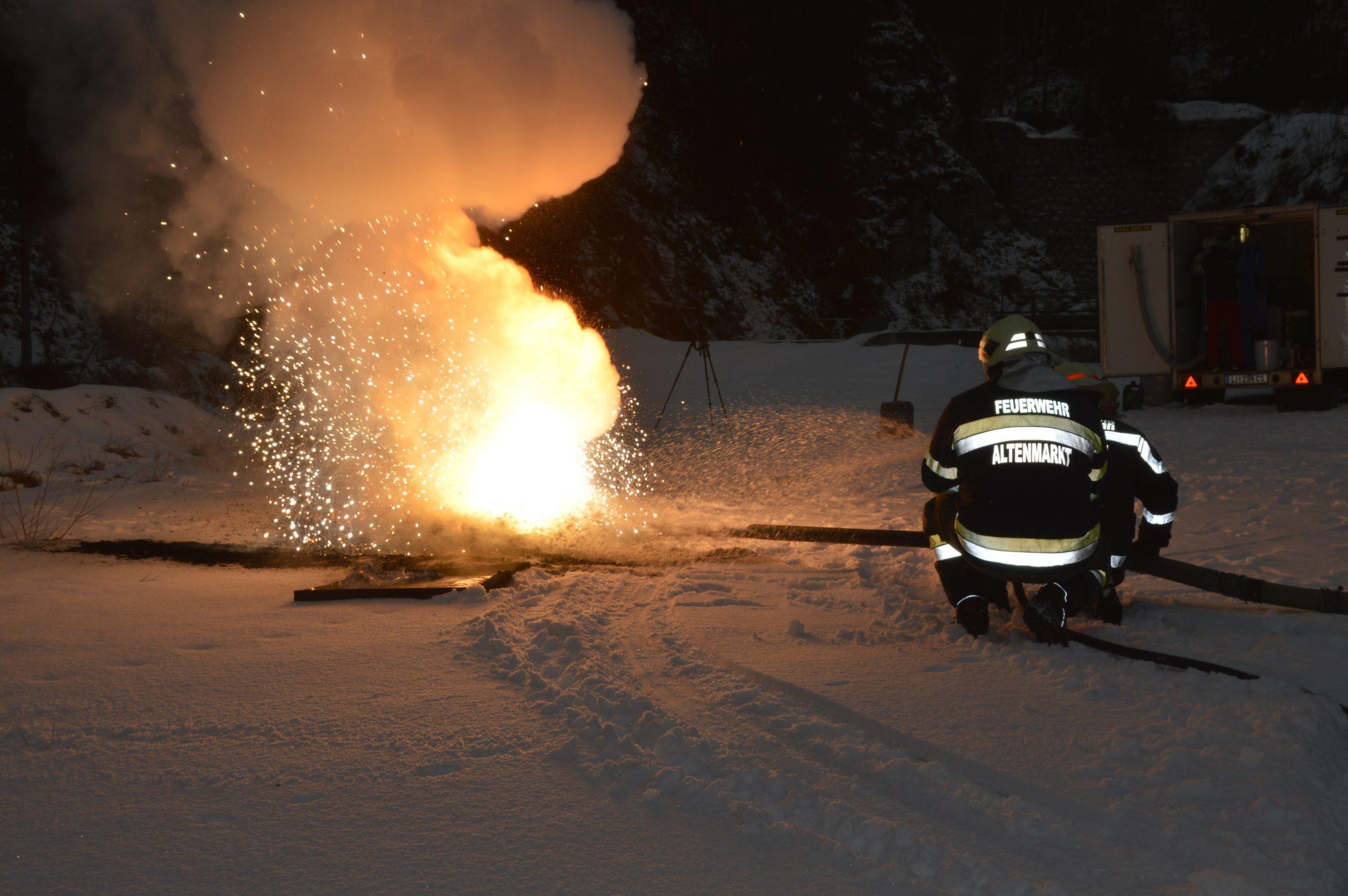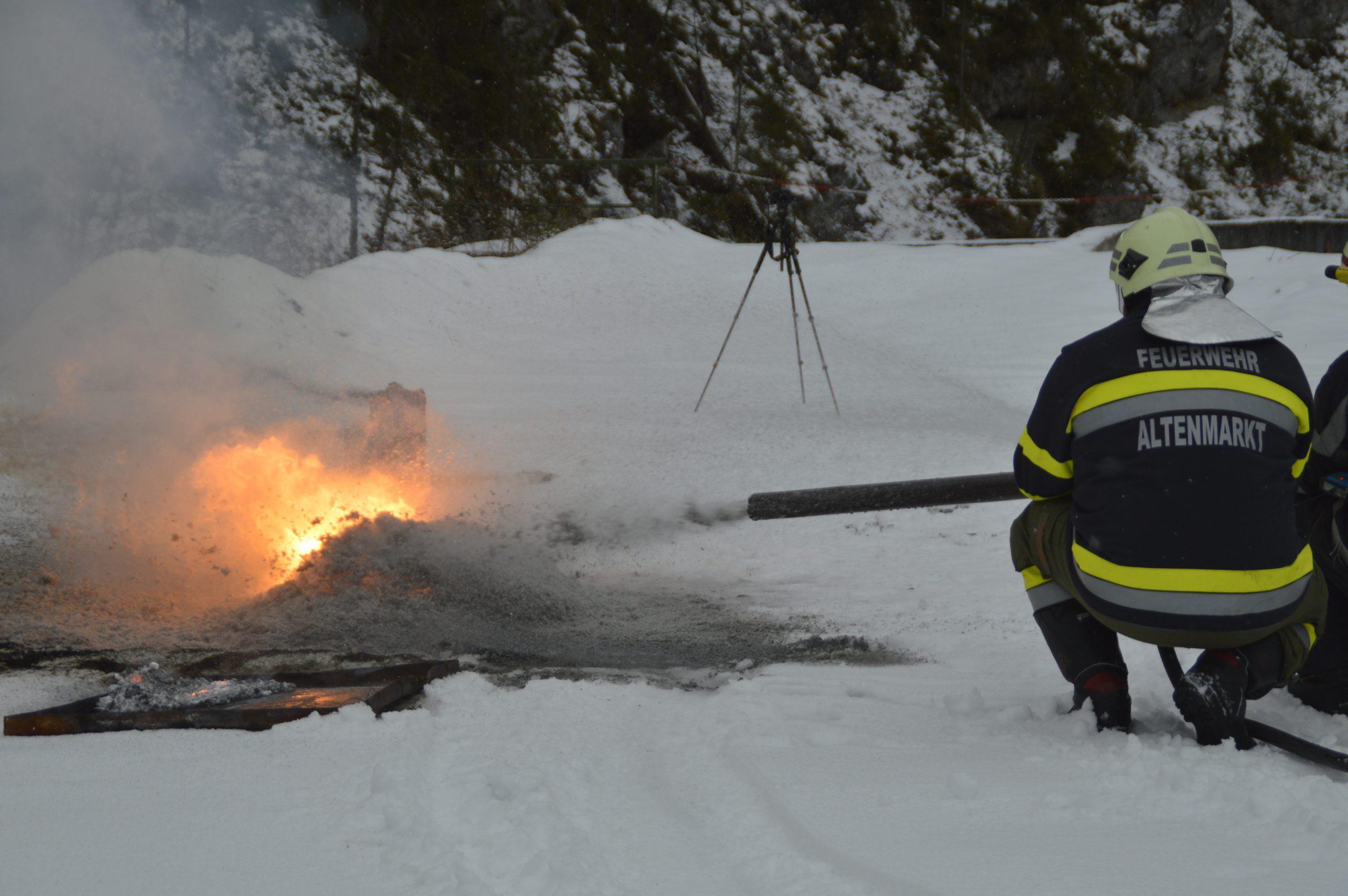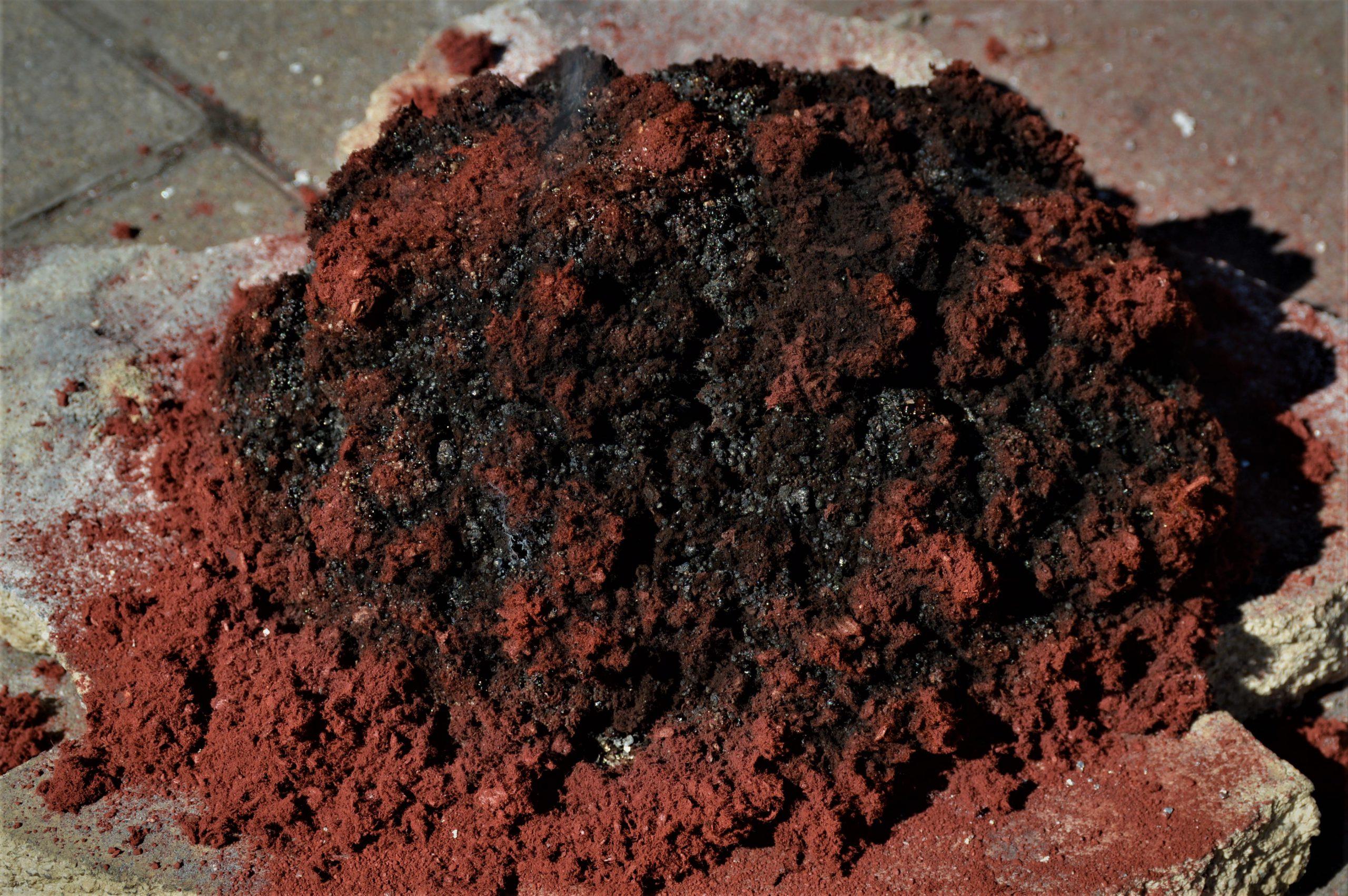Innovative extinguishing agent: Using flakes to combat magnesium fires
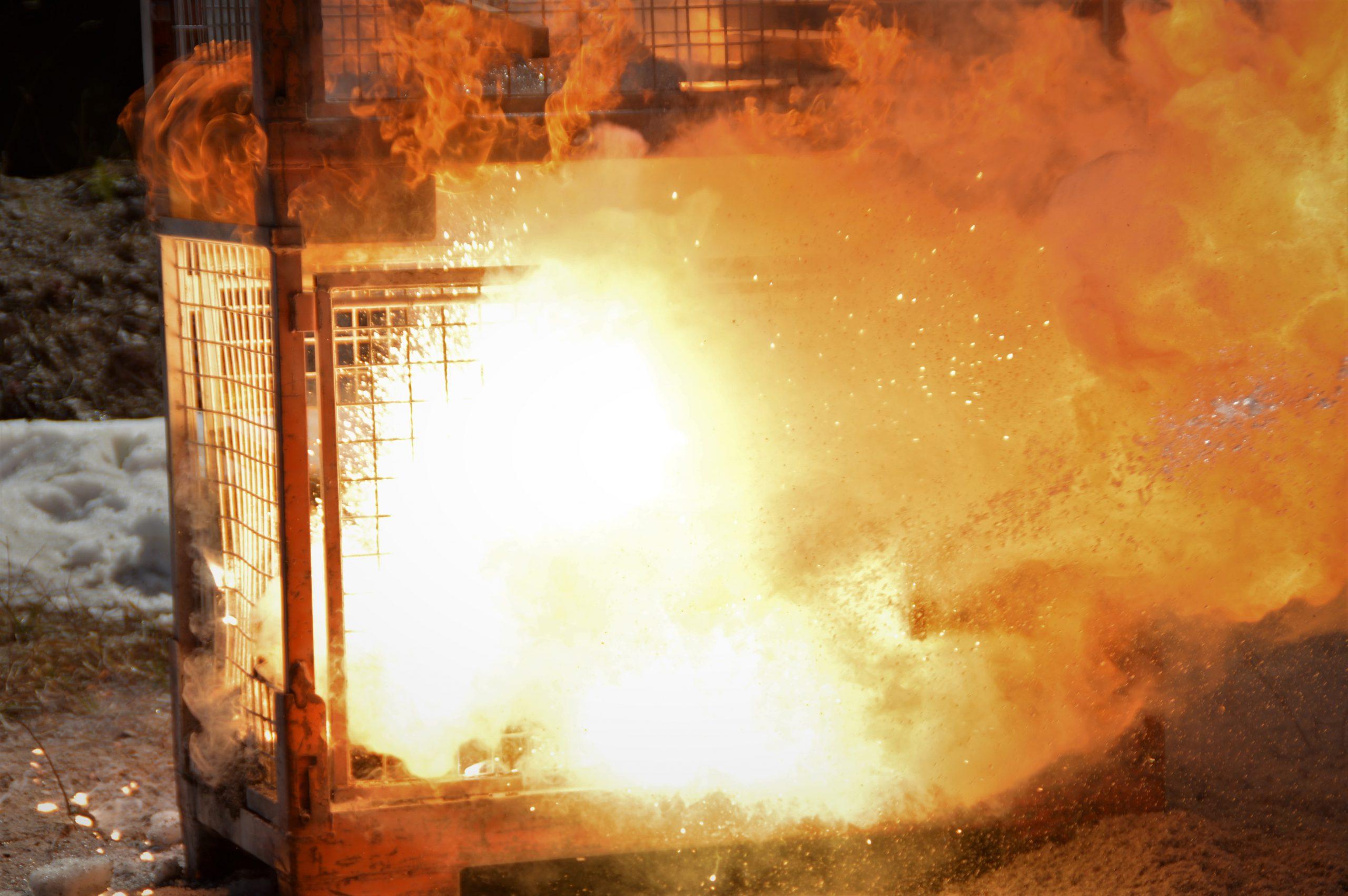
27 October, 2022
With their final theses in the Bachelor of International Industrial Engineering, Bernhard Brandstätter and Semir Cosic won third place in the KFV Research Award.
Magnesium fires are difficult to extinguish and feared in firefighting. Burning magnesium reaches temperatures of up to 3000 ° C and is enormously reactive. Therefore, water cannot normally be used in extinguishing fires because it would cause an explosion of oxyhydrogen gas. Firefighters therefore use special covering salts or dry sand to extinguish such fires. However, these agents can only be applied at close range, which is why this approach is usually only considered for smaller fires.
In 2019, the start-up Hagauer & Matlschweiger OG developed an innovative extinguishing agent that can be used to bring magnesium fires under control more quickly and safely. For their final theses in the Bachelor of International Business and Engineering, Bernhard Brandstätter and Semir Cosic worked with the company and addressed the question of how the process can be further improved. Their work has now won third place in the KFV Research Award, in which the Austrian Road Safety Board honors innovative projects for accident and damage prevention.
Optimization of the Extinguishing Agent
The extinguishing agent developed by the Styrian company consists of organic cellulose flakes, phosphates and an intumescent agent, which inflates the extinguishing system and forms an insulating protective layer. Semir Cosic dealt with the development of the intumescent agent in his bachelor thesis. Bernhard Brandstätter, in turn, focused on optimizing the flakes for the extinguishing system. To this end, he tested different flake sizes and experimented with various additives, right through to large-scale fire tests and application scenarios for the entire mixture.
In the event of a fire, the extinguishing agent is applied with a hose from a few meters away and lays over the molten metal. “This layer can then even be cooled with a water spray without causing an oxyhydrogen explosion. The spray removes the heat from the source of the fire, and the flake layer begins to char from below, eventually forming a crust,” Brandstätter explains. In this way, the fire is gradually smothered and the heat is extracted. “The system also has the advantage that the flake mixture hardly affects the environment,” says the student.
For their bachelor’s theses, the two students tested the agent in several series of trials, including large-scale fire tests at a ballast plant. In addition, they compared the mixture with six other agents and were able to prove that their further development achieved the best results.
Advantages for Firefighting Practice
The novel process now makes it possible to bring even large magnesium fires under control in a short time, while posing less potential danger to firefighters than previous firefighting practices.
As part of the start-up, a mobile and self-sufficient trailer has now been developed for practical use. In addition to a power unit for the self-sufficient power supply and the conveying device, the trailer also contains a storage facility and a feed for the cellulose flakes. In this way, firefighters should be able to use the new technology even more easily and safely at the scene of a fire.
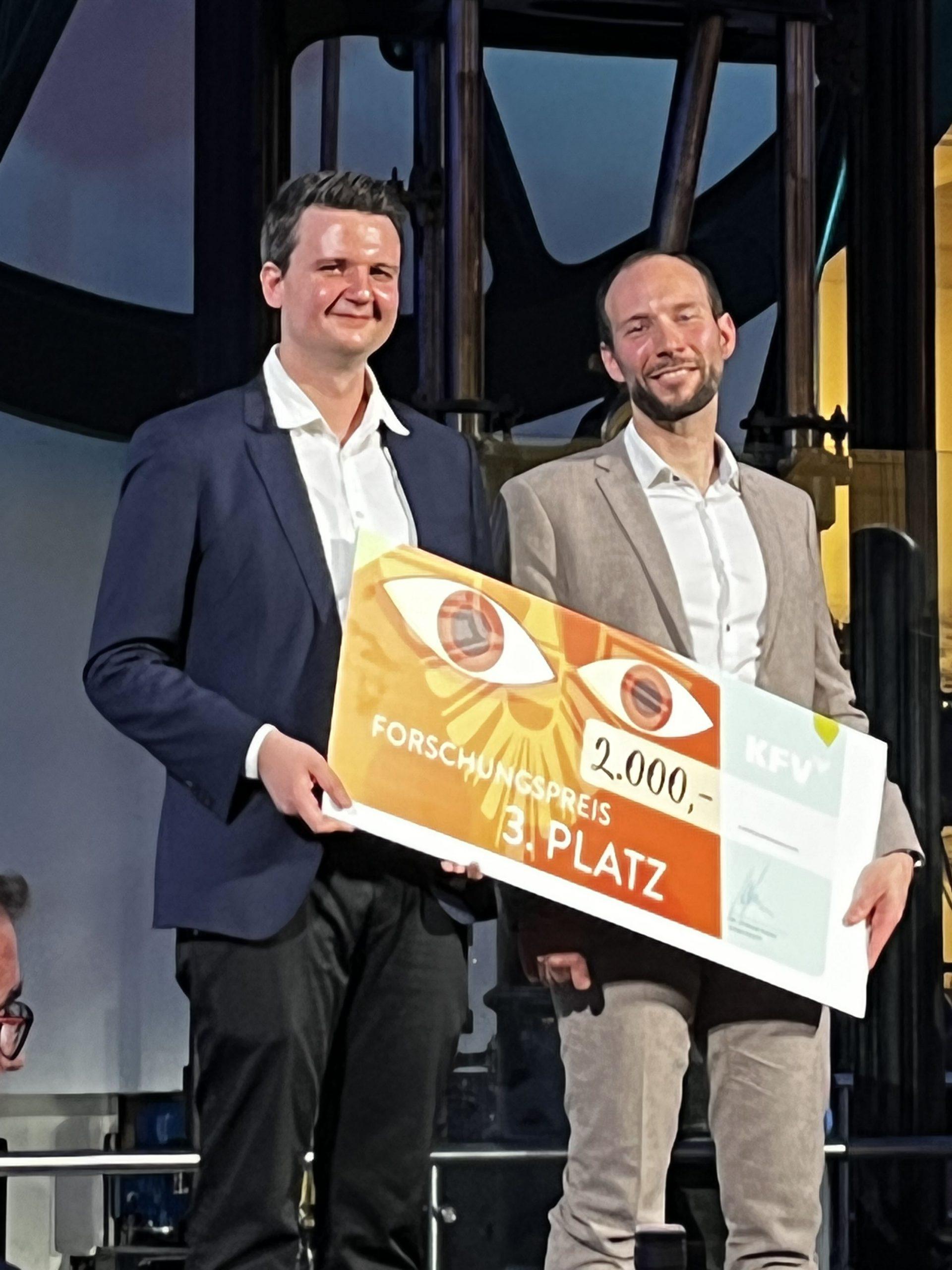
Semir Cosic and Bernhard Brandstätter
